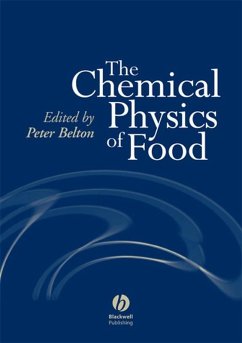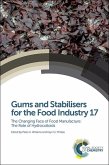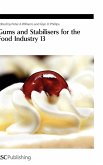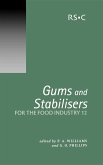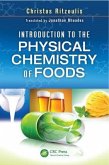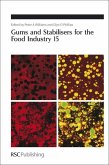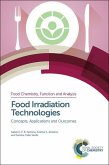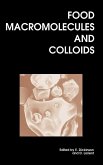This important book covers the main types of materials that food scientists have to deal with. Special attention is given to starch and gluten as being of particular importance in food science and not typical of general classes of substance. The book approaches the subject matter form a physics viewpoint.
Based on the fundamental quantitative principles, which must form the basis for any discussion, qualitative or quantitative, about the behaviour of the systems involved, the book thus differs from others currently available. The editor, Peter Belton, currently President of the Institute of Food Science and Technology has drawn together an impressive list of international contributors, providing a book which is essential to all those involved in work on the structure of foods
Chemical Physics of Food Edited by Peter Belton Based on the principle that food science requires the same rigour as the more traditional physical sciences, Professor Peter Belton has drawn together an international team of authors to demonstrate the chemical physics approach to food. Combining the applications of chemical and physical methods together with a clear quantitative consideration of data, The Chemical Physics of Food offers the food scientist and technologist: - Coverage of major materials, including starch and gluten - Consistent approach to the subject matter from a chemical physics viewpoint - An esteemed team of international Authors All those involved in research into food structure, including food scientists, food technologists, food chemists and physicists should find much of interest in this book which will also provide libraries in all universities, research establishments and food companies with a valuable reference for this important area. About the Editor Professor Peter Belton is based in the School of Chemical Sciences and Pharmacy at the University of East Anglia, Norwich, UK
Hinweis: Dieser Artikel kann nur an eine deutsche Lieferadresse ausgeliefert werden.
Based on the fundamental quantitative principles, which must form the basis for any discussion, qualitative or quantitative, about the behaviour of the systems involved, the book thus differs from others currently available. The editor, Peter Belton, currently President of the Institute of Food Science and Technology has drawn together an impressive list of international contributors, providing a book which is essential to all those involved in work on the structure of foods
Chemical Physics of Food Edited by Peter Belton Based on the principle that food science requires the same rigour as the more traditional physical sciences, Professor Peter Belton has drawn together an international team of authors to demonstrate the chemical physics approach to food. Combining the applications of chemical and physical methods together with a clear quantitative consideration of data, The Chemical Physics of Food offers the food scientist and technologist: - Coverage of major materials, including starch and gluten - Consistent approach to the subject matter from a chemical physics viewpoint - An esteemed team of international Authors All those involved in research into food structure, including food scientists, food technologists, food chemists and physicists should find much of interest in this book which will also provide libraries in all universities, research establishments and food companies with a valuable reference for this important area. About the Editor Professor Peter Belton is based in the School of Chemical Sciences and Pharmacy at the University of East Anglia, Norwich, UK
Hinweis: Dieser Artikel kann nur an eine deutsche Lieferadresse ausgeliefert werden.
?The expert reviews in this book are valuable sources ofinformation on their respective topics. Many of the chapters assumea significant amount of background knowledge.? (InternationalJournal of Food Science and Technology, September 2009)
'This book completed by bibliographical references, provides aphysicochemical viewpoint of the food field, but also points outthe important insufficiency in current analytical technologies,providing all food specialists with a new approach in thisinteresting subject area.'International Journal of BiologicalMacromolecules
'combining the applications of chemical and physical methodstogether with a clear quantitative consideration of data, this bookoffers the food scientist and technologist an extensive coverage ofmajor materials, including starch and gluten and provides aconsistent approach to the subject from a chemical physicsviewpoint.' Food Engineering and Ingredients June 2007
'This book completed by bibliographical references, provides aphysicochemical viewpoint of the food field, but also points outthe important insufficiency in current analytical technologies,providing all food specialists with a new approach in thisinteresting subject area.'International Journal of BiologicalMacromolecules
'combining the applications of chemical and physical methodstogether with a clear quantitative consideration of data, this bookoffers the food scientist and technologist an extensive coverage ofmajor materials, including starch and gluten and provides aconsistent approach to the subject from a chemical physicsviewpoint.' Food Engineering and Ingredients June 2007

